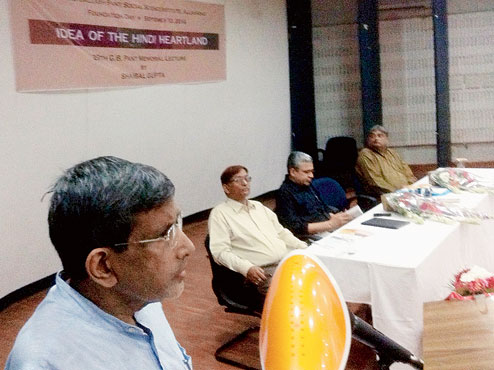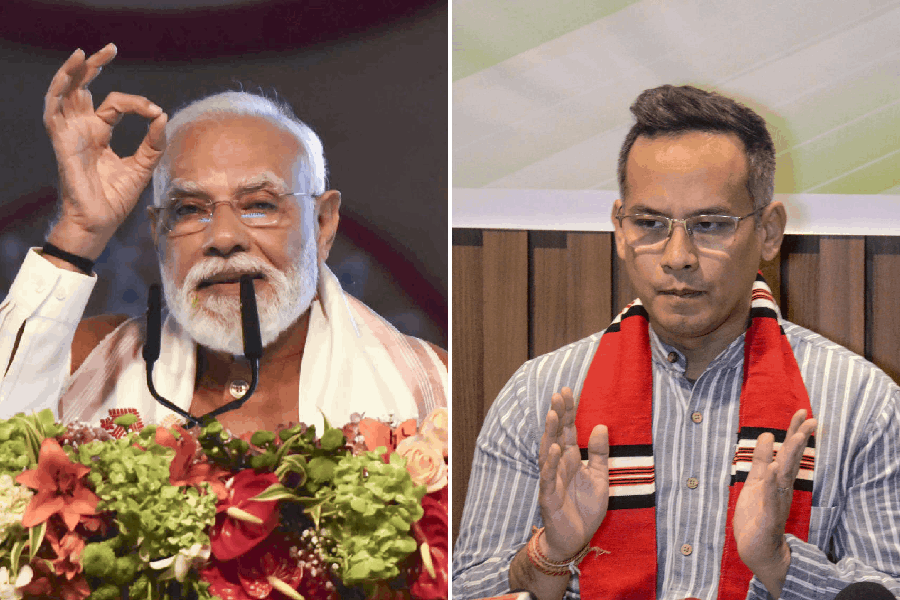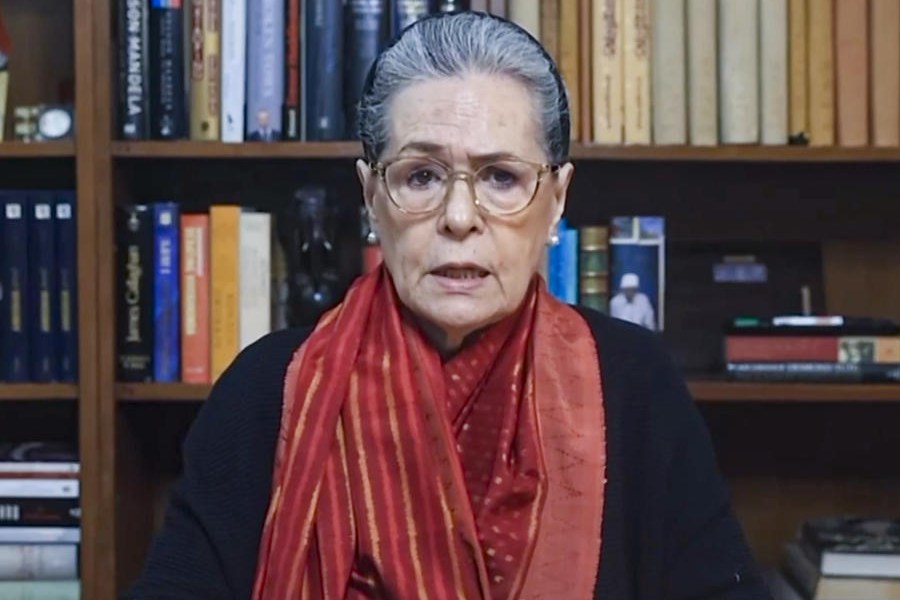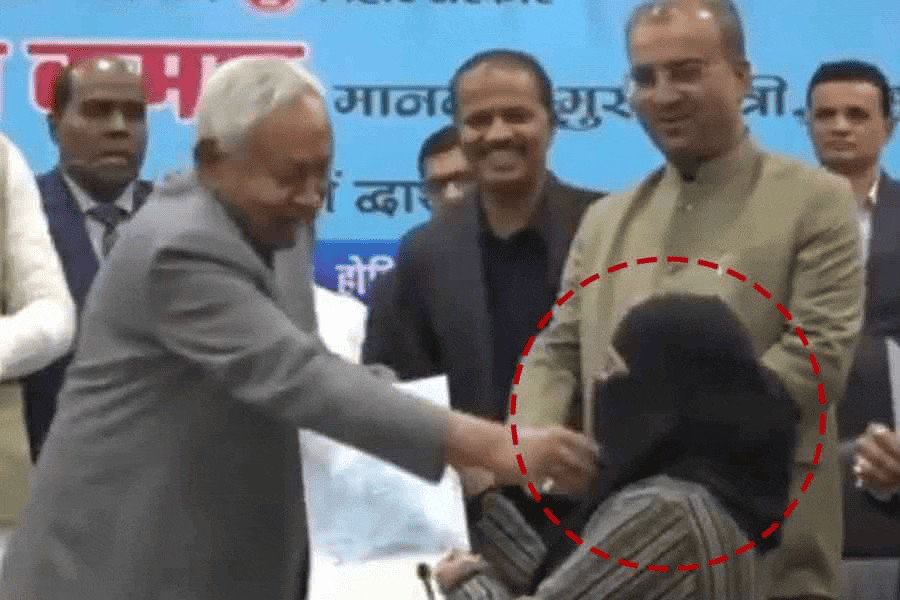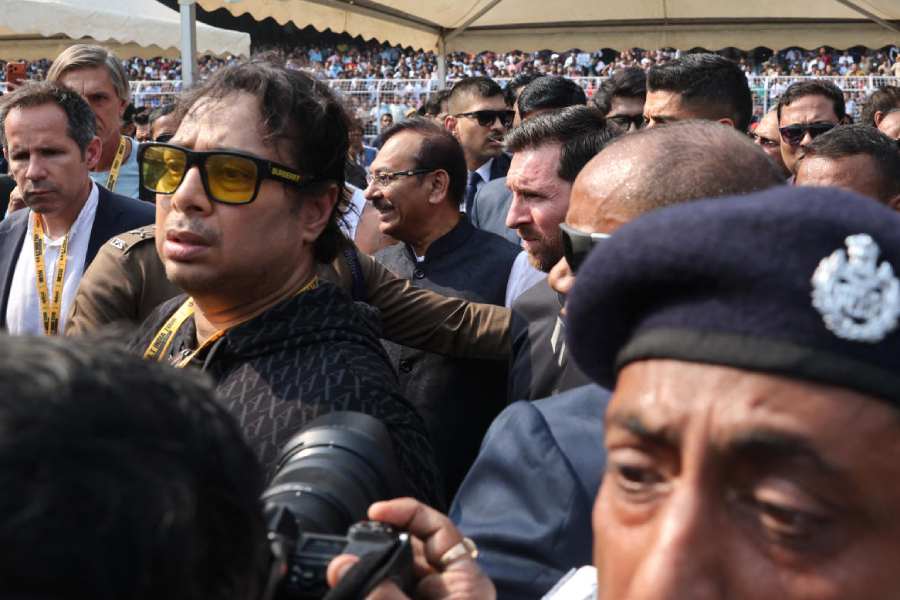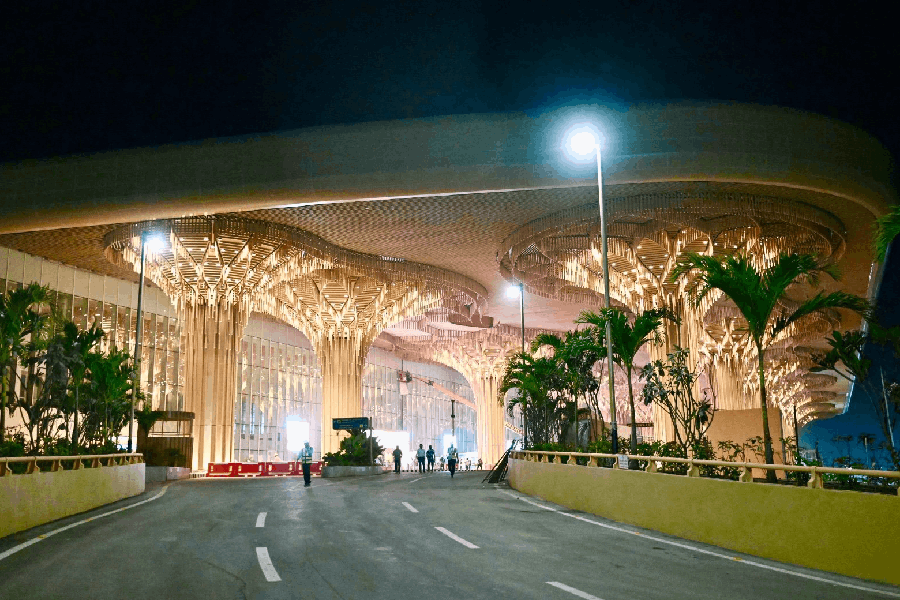 |
| Shaibal Gupta addresses the 29th GB Pant Memorial Lecture at Govind Ballabh Pant Social Science Institute in Allahabad on Wednesday. Telegraph picture |
Social economist Shaibal Gupta on Wednesday attributed the sluggish growth of sub-nationalism in the Hindi heartland to lack of standardisation of Hindi.
“Between Bihar in the east and Rajasthan in the west, linguists have identified at least a dozen variants of the language, each one spoken by at least 20 million people,” Gupta said while delivering the prestigious 29th GB Pant Memorial Lecture at Govind Ballabh Pant Social Science Institute in Allahabad. He spoke for 40 minutes on the “Idea of the Hindi heartland”.
Asian Development Research Institute member-secretary Gupta picked up the subject from the report of Government of India ordering five Bharat Ratna medallions from RBI and its decision that minimum proficiency in English was no longer required for prelims in UPSC. He focused on the resentment expressed by certain non-Hindi intellectuals over the Union government’s decision.
Explaining the shift towards the Hindi heartland, Gupta asserted that the contour and complexion of the Union government has generally been decided in the electoral field of the Hindi Heartland since Independence. “According to the Census data, Hindi is the mother tongue of 22 per cent of the population but spoken as a language by 42 per cent,” he said.
Highlighting the importance of Varanasi in the Hindi heartland, Gupta said: “Just as the ideological epicentre of the Young Bengal Movement was Calcutta, Varanasi emerged as the academic and ideological centre of the Hindu heartland.” He said Brahmin pandits, merchants and the erstwhile king of Varanasi laid the ideological foundation of Hindi heartland.
He said it was not a political accident that Prime Minister Narendra Modi decided to contest from Varanasi. “He was trying to send a religious message across the Hindu constituency of India in general and the Hindi heartland in particular. The agenda of Modi does not end with getting elected from the city. He is now in the process of building an enviable brand of Varanasi globally,” Gupta said.
He pointed out that the states of the Hindi heartland pose the toughest development challenge to India. “These states are considered laggard and a blot on the overall profile of India, which has experienced at least some progress in recent decades. The development bottlenecks in the Hindi heartland are considered a drain on the national exchequer,” Gupta said, pointing out that successful states feel that despite their success successive finance commissions have penalised them in awarding non-plan grant on the pretext of equalisation.
He said the states of Hindi heartland are still carrying the historical baggage of oppression by the British, which includes termination of their artisans, traders and entrepreneurs and the archaic land tenure system. “The draconian feudal legacy still stands on the way of emergence of a development oriented middle class in these states. This had a far-reaching consequence on the quality of their governance,” he said.
Gupta said social stagnation in the Hindi heartland states, including Uttar Pradesh and Bihar, had unfolded a new brand of social leadership, leading to the establishment of their electoral hegemony.

